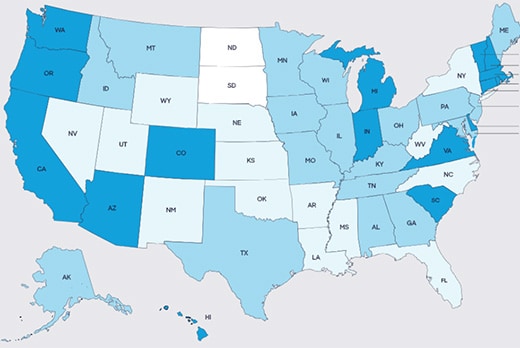Updated: Oct 20, 2023

Article highlights
- Once you’ve been accepted by a college, you should receive a financial aid award letter. It details how much financial support you will receive to help you pay for college.
- If you're eligible for any grants, scholarships, Work-Study, and federal loans, that information will be included in your award letter.
- It’s wise to compare each financial aid award letter as you decide which school is best for you.
Hi, I'm Jodi Okun, and I'm here to help you understand the financial aid award letter. After you complete your FAFSA®, you'll receive two emails: a confirmation email with your Expected Family Contribution, or EFC, and a second email with your Student Aid Report, or SAR for short.
Note: Beginning with the 2024-25 academic year, the Student Aid Index (SAI) will replace the EFC. Additionally, the FAFSA Submission Summary will replace the SAR.
The next step is you're going to receive your financial aid award letter. You should receive this around February or March. You don't always receive it snail mail, some colleges post it in your online student center. Many colleges do not meet full financial need for every student, so there may be a difference you will need to pay.
Some points to consider when comparing financial aid award letters include:
- The Cost of Attendance: Cost of Attendance, or COA, is the initial amount it costs to attend each college. This is normally listed on the award letter or available from the school's financial aid office and website. It includes costs like tuition, room, board, fees, books, transportation, and living expenses.
- Grants and Scholarships: The award letter will list the grants, scholarships, and Work-Study programs you can receive. If you subtract grants and scholarships from tuition, fees, room and board, this will give you the net price for what it will cost you to attend the college.
After you receive all your award letters, you should compare the colleges. Compare the net price for each school and determine the amount of student debt you or your child might have to take on to pay for each school. Use this information to talk with your child about choosing a college. If your student has an interest in a particular school that doesn't have the best financial aid package, discuss your situation further with the college's financial aid office. You could do this during a college visit.
Express your child's sincere interest and ask if there's anything else that can be done. If you can't change the final award amount, look for more scholarship aid on your own, or talk to your child about taking out federal or private student loans to cover the remaining balance.
Making sense of your financial aid award letter
You’ve spent countless hours writing essays, submitting college applications, and waiting for a response. After what may seem like an eternity, you’ll start receiving acceptance letters. And shortly thereafter, financial aid award letters will follow.
Your next step? Understanding how much financial support you’ll receive from each school to help pay for college. The information you’ll need will be detailed in each school’s financial aid award letter you receive. Knowing what to expect can help you compare your financial aid packages and better understand what your out-of-pocket cost will be.
What is a financial award letter for college?
The financial aid award letter details how much money you’ll receive from various sources to help pay for college. If you submitted a FAFSA® (Free Application for Federal Student Aid), the award letter may include federal grants, Work-Study, and federal loan eligibility. It will also detail any school-based aid such as scholarships for academic or athletic achievements, community involvement and volunteerism, and more.
What’s included in a financial aid award letter?
While award letter templates can vary, they all contain the same information. As you read through each one, you’ll see financial information in sections like these:
- Cost of attendance (COA), including both direct and indirect costs
- Grants and scholarships (i.e., gift aid)
- Federal Work-Study
- Federal student loans
- Net COA (i.e., COA minus total grants and scholarships)
When to expect a financial aid award letter
Financial aid award letters will accompany or closely follow acceptance letters, beginning as early as February for general admissions. It’s important to keep an eye out for any correspondence from the schools you’re considering because your financial aid award letters may come via snail mail, email, or posted online in the school’s communication portal. You should have all your award letters by April. If you don’t, reach out to the school.
How to compare financial aid award letters
Once you have all your award letters, you can begin comparing packages to assess which one makes the most sense for your financial situation. Here’s how to look at the options that have been offered to you:
- Identify which types of aid need to be paid back. Your financial aid package may reflect a mix of free money and money that needs to be paid back. Scholarships and grants don’t need to be repaid while federal loans like Federal Direct Loans (subsidized and unsubsidized) or a Parent PLUS loan do—and with interest.
- Learn about the terms of any scholarship awarded to you. It’s important to clarify if there are any stipulations for your scholarships before you accept them. For example, will the scholarship automatically renew each year or will you have to reapply? Will you have to maintain a certain GPA or participation in extracurriculars or athletics?
- If you receive a Federal Work-Study award, don’t immediately include it in your up-front calculations because Work-Study money is earned incrementally through a part-time job. The job isn’t guaranteed and you must apply for it. The number of available eligible positions on or off campus and hours may be limited, so it’s important to start your job search as soon as you can if you want to take advantage of this award.
Also note that many colleges do not meet full financial need and you will be expected to pay the difference between your COA and any financial aid you are eligible to receive. Understanding your package can also help you assess whether or not you may need private student loans as well, which you can use to help cover the remaining costs. Using an Award Letter Comparison tool can ensure you’re comparing categories correctly.
It’s also worth noting that you will have to fill out the FAFSA each year you are in school, and awards may change based on your financial situation, the number of credits you’re taking each semester, and other external factors.
Does financial aid need to accepted or is it automatically awarded?
Some schools will ask you to accept or reject each source of financial aid you are eligible to receive. If you reject a certain source of aid in your award letter, that does not mean another source of aid will increase. External scholarships may also impact your financial aid package. It is your responsibility to share information with the financial aid office regarding any scholarships you have received. This may mean that the package will be revised with the scholarship in consideration.
What to do if your financial situation has changed?
If your financial circumstances have changed since you submitted the FAFSA, you can contact the financial aid office to appeal the package. Each school has its own appeal process you will have to follow and you will have to submit new documents clarifying how your financial circumstances have changed.
Comparing financial aid award letters can help you determine which package makes the most sense for you and your family. Give yourself plenty of time to look through your award letter and ask questions if you’re unclear about anything.
FAFSA® is a registered trademark of the US Department of Education and is not affiliated with Discover® Student Loans.











